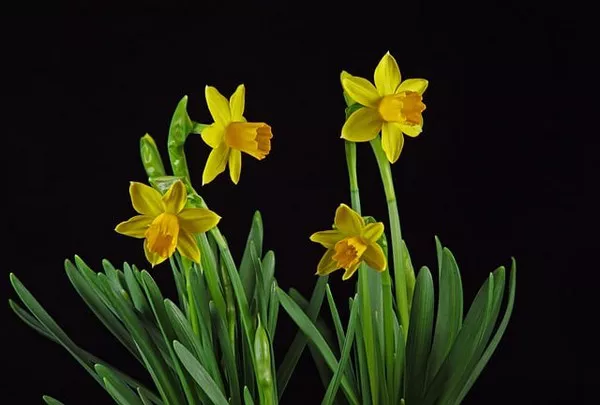Cats are known for their inquisitive nature, and they often explore their surroundings with great curiosity. While this behavior can be endearing, it can also pose risks to their health, especially when it comes to encounters with toxic plants and flowers. Many common garden and household flowers can be harmful to cats when ingested or even when they come into contact with their fur. In this article, we will explore the various flowers that are toxic to cats, the potential health risks they pose, and steps to prevent accidental exposure.
Lilies (Lilium species)
Lilies are perhaps the most notorious flowers when it comes to cat toxicity. Various species of lilies, such as Easter lilies, tiger lilies, and daylilies, contain compounds that can cause severe kidney damage in cats. Ingesting any part of a lily, including the leaves, flowers, or even the water from the vase, can be lethal to felines. Early symptoms of lily poisoning in cats include vomiting, loss of appetite, and lethargy, but they can progress rapidly to kidney failure if left untreated.
Azaleas (Rhododendron species)
Azaleas are popular garden plants, but they contain grayanotoxins that are highly toxic to cats. Ingesting any part of the azalea plant can lead to symptoms like vomiting, diarrhea, drooling, and in severe cases, cardiac arrhythmias and even death. It’s important to keep azaleas out of your cat’s reach and refrain from planting them in areas accessible to your feline friend.
Oleander (Nerium oleander)
Oleander is a beautiful flowering shrub that is highly toxic to both cats and other animals. All parts of the oleander plant, from the flowers to the leaves, contain potent toxins called cardiac glycosides. Ingesting oleander can lead to severe symptoms, including vomiting, diarrhea, drooling, and potentially life-threatening heart arrhythmias. Oleander should be avoided in households with cats, and if it’s already present, precautions should be taken to keep pets away from it.
Autumn Crocus (Colchicum autumnale)
Autumn crocus, often mistaken for the harmless spring crocus, is a highly toxic plant for cats. The entire plant, including the bulbs, is dangerous. Ingesting even a small amount can lead to severe gastrointestinal distress, organ damage, and in extreme cases, death. Symptoms of autumn crocus poisoning in cats may include vomiting, diarrhea, abdominal pain, and organ failure.
Daffodils (Narcissus species)
Daffodils are a common spring flower, but they contain alkaloids that can be toxic to cats. Ingesting any part of the daffodil, including the bulbs, can lead to symptoms like vomiting, diarrhea, drooling, and in some cases, cardiac arrhythmias. While daffodil exposure is usually not fatal, it can still cause significant discomfort for your cat. If you have daffodils in your garden, be sure to keep your cat away from them.
Tulips (Tulipa species)
Tulips, another popular spring flower, contain toxins in their bulbs that can be harmful to cats. Ingesting tulip bulbs can result in symptoms like drooling, gastrointestinal distress, and, in severe cases, difficulty breathing. While the effects are typically not fatal, it is essential to prevent your cat from accessing tulip bulbs and flowers.
Poinsettia (Euphorbia pulcherrima)
Poinsettias are common holiday plants, known for their vibrant red and green foliage. While they have a reputation for being highly toxic, their toxicity to cats is generally overemphasized. In reality, poinsettia toxicity in cats is relatively mild and usually results in mild gastrointestinal symptoms, such as vomiting and drooling. Nevertheless, it’s still advisable to keep poinsettias out of your cat’s reach during the holiday season.
Chrysanthemums (Chrysanthemum species)
Chrysanthemums, often referred to as mums, are popular garden and floral plants. They contain compounds called pyrethrins, which can be toxic to cats. Ingesting chrysanthemum foliage can lead to symptoms like drooling, vomiting, and diarrhea. While chrysanthemum toxicity in cats is generally mild, it’s best to keep these plants away from your feline companion.
Rhubarb (Rheum rhabarbarum)
While rhubarb is a common garden plant used in cooking and baking, it is also toxic to cats. The leaves of rhubarb contain oxalate crystals, which can cause kidney damage in cats if ingested. Symptoms may include drooling, vomiting, and abdominal pain. To keep your cat safe, ensure that they cannot access rhubarb plants in your garden.
Foxglove (Digitalis purpurea)
Foxglove is a beautiful and striking garden flower known for its tall spikes of tubular blossoms. However, it contains potent cardiac glycosides that can be harmful to cats if ingested. Symptoms of foxglove poisoning in cats may include drooling, vomiting, diarrhea, and potentially life-threatening cardiac arrhythmias. It’s crucial to keep foxglove out of your cat’s reach, especially if you have a garden.
Prevention and Awareness
To protect your feline companions from the dangers of toxic flowers, consider the following preventive measures:
Education: Educate yourself about common toxic flowers and plants to recognize potential dangers.
Cat-proofing: Create a safe environment for your cat by removing or securely protecting any toxic plants in your home or garden.
Supervision: Monitor your cat’s outdoor activities to prevent them from coming into contact with harmful plants.
Consult a veterinarian: If you suspect your cat has ingested a toxic plant, seek immediate veterinary attention. Do not attempt to treat your cat on your own.
Alternative plants: If you love flowers and want to keep them in your home, consider cat-safe alternatives like cat grass, catnip, or pet-friendly houseplants.
Conclusion
Cats are beloved members of many households, and their safety should always be a top priority. Understanding which flowers are toxic to cats and taking the necessary precautions can go a long way in ensuring the well-being of your feline friend. By following the guidelines provided in this article, you can create a safe and beautiful environment for both your cat and your favorite flowers.


